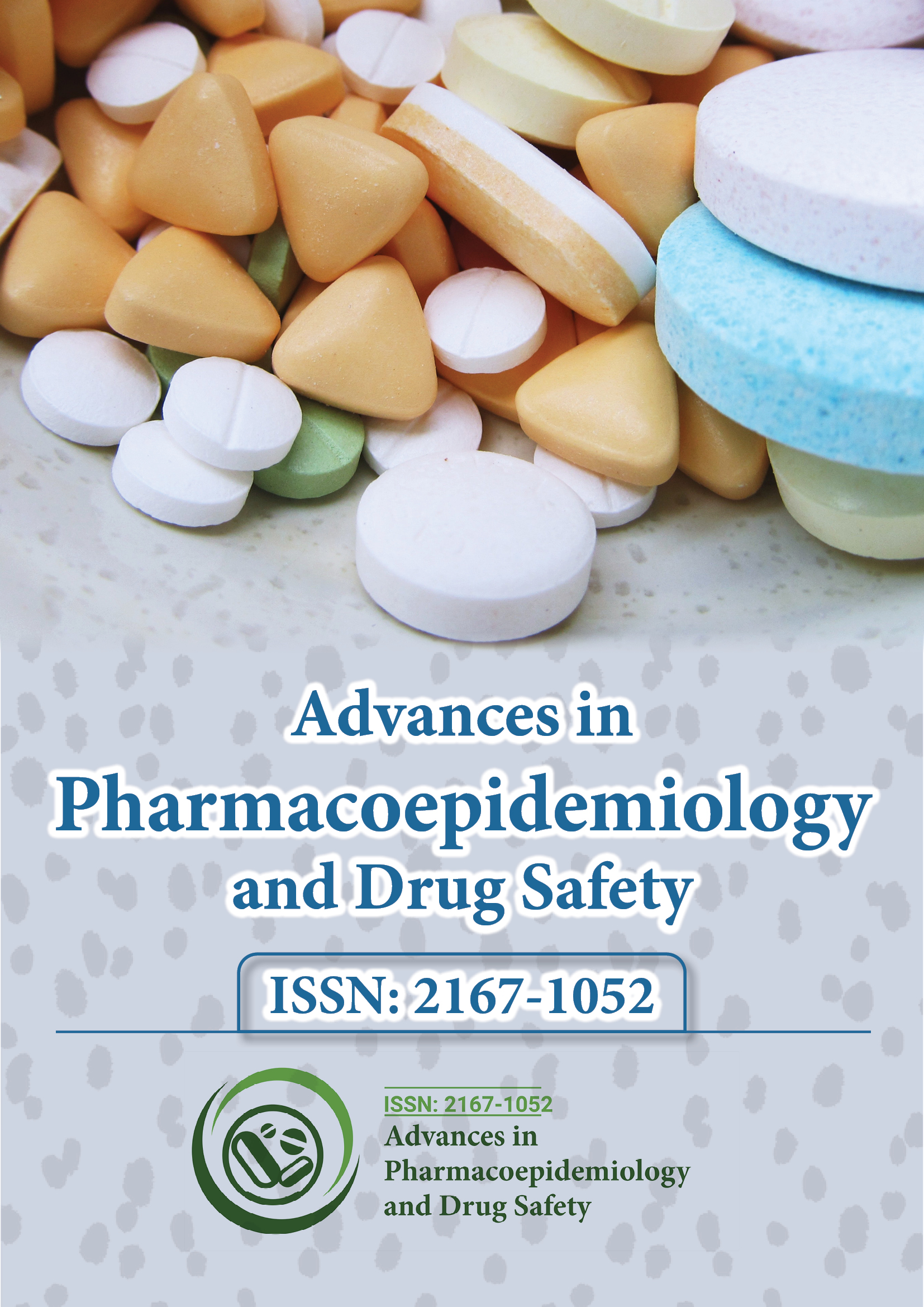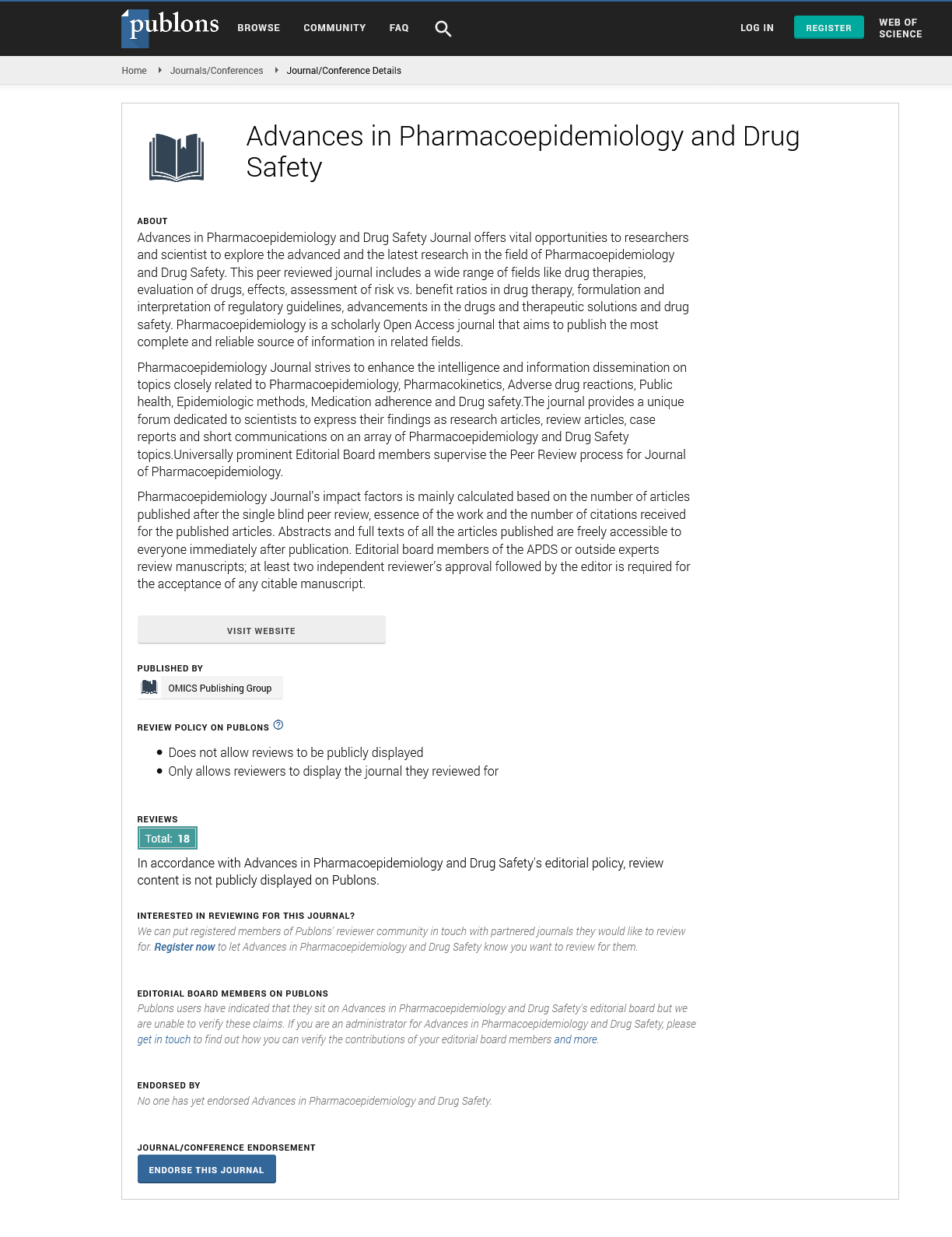Indexed In
- Open J Gate
- Genamics JournalSeek
- Academic Keys
- JournalTOCs
- RefSeek
- Hamdard University
- EBSCO A-Z
- SWB online catalog
- Publons
- Geneva Foundation for Medical Education and Research
- Euro Pub
- Google Scholar
Useful Links
Share This Page
Journal Flyer

Open Access Journals
- Agri and Aquaculture
- Biochemistry
- Bioinformatics & Systems Biology
- Business & Management
- Chemistry
- Clinical Sciences
- Engineering
- Food & Nutrition
- General Science
- Genetics & Molecular Biology
- Immunology & Microbiology
- Medical Sciences
- Neuroscience & Psychology
- Nursing & Health Care
- Pharmaceutical Sciences
Commentry - (2024) Volume 13, Issue 4
Precision Medicine through Advanced Drug Delivery Systems
Yan Ling*Received: 29-Nov-2024, Manuscript No. PDS-24-28229; Editor assigned: 02-Dec-2024, Pre QC No. PDS-24-28229 (PQ); Reviewed: 16-Dec-2024, QC No. PDS-24-28229; Revised: 23-Dec-2024, Manuscript No. PDS-24-28229 (R); Published: 30-Dec-2024, DOI: 10.35250/2167-1052.24.13.376
Description
Drug delivery is a complex field in pharmacology that involves the process by which a drug is administered to the body and how it reaches its site of action. The goal of drug delivery systems is to ensure that the drug is released in a controlled manner, at the right place and time, to maximize its therapeutic effect while minimizing side effects. With rapid advancements in pharmaceutical sciences, new drug delivery methods are continually being developed, present more effective and efficient treatments for a wide range of medical conditions. A well engineered drug delivery system ensures that the active ingredient in a drug is delivered in the optimal manner.
The system may control how quickly the drug is released into the bloodstream or target the drug directly to specific cells or tissues, avoiding areas where it might cause harm. This becomes especially important in the case of diseases like cancer, where targeted drug delivery is essential to attack cancer cells without harming healthy cells. There are several types of drug delivery systems, each designed for different therapeutic needs. These can be broadly categorized into conventional and advanced systems. Oral drug delivery is the most common and traditional method of drug administration. Drugs are taken by mouth in the form of tablets, capsules, or liquids and absorbed through the gastrointestinal tract. The major advantage of oral delivery is convenience, but it has visual aspect such as the variability in absorption liver metabolizes the drug before it reaches the bloodstream.
Injectable drug delivery involves administering the drug directly into the bloodstream, tissues, or muscles via syringes or other devices. This method avoids the digestive system and ensures rapid absorption. It is commonly used for drugs that cannot be taken orally, such as insulin or vaccines. Topical drug delivery involves the application of drugs to the skin in the form of creams, ointments, or patches. Topical drug delivery is used for localized conditions such as skin infections, dermatitis, or pain relief. While this method is non-invasive, its limitation lies in the drug's ability to penetrate the skin and reach the internal tissues effectively. Pulmonary drug are delivered directly into the lungs using inhalers. This method is particularly effective for treating respiratory conditions such as asthma and Chronic Obstructive Pulmonary Disease (COPD).
In order to sustain therapeutic drug levels in the bloodstream for prolonged periods of time, controlled release devices are made to release a drug gradually over time. Controlled release systems are beneficial for chronic conditions, such as hypertension or diabetes, where consistent drug levels are needed. The primary advantage is that they reduce the frequency of drug administration, thus improving patient compliance. Targeted drug delivery this approach aims to deliver drugs directly to the disease site while minimizing exposure to healthy tissues. It is particularly useful in treating conditions like cancer, where chemotherapeutic agents can be delivered to tumour cells while sparing normal cells from toxic effects. Targeted drug delivery often involves using nanoparticles, liposomes, or monoclonal antibodies that are engineered to recognize specific molecular markers on the surface of target cells. Nanotechnology drug delivery nanotechnology is a rapidly growing field in drug delivery.
Artificial Intelligence (AI) and machine learning are also being used to design and optimize drug delivery systems. By analyzing vast amounts of data, AI can predict how drugs will behave in the body, allowing for the development of more precise and effective delivery methods. Personalized medicine, where treatments are potential to individual patients based on their genetic makeup and disease profile, is expected to transform the field of drug delivery.
In conclusion, drug delivery systems are a fundamental element of modern medicine, ensuring that therapeutic factors reach the target site effectively and efficiently. The evolution of drug delivery technologies, from oral tablets to advanced nanocarriers, has significantly improved the treatment of numerous medical conditions. With continued innovation and research, new methods that provide precision, safety and patient convenience will reform the environment of healthcare, providing better outcomes for patients.
Citation: Ling Y (2024). Precision Medicine through Advanced Drug Delivery Systems. Adv Pharmacoepidemiol Drug Saf. 13:376.
Copyright: © 2024 Ling Y. This is an open access article distributed under the terms of the Creative Commons Attribution License, which permits unrestricted use, distribution, and reproduction in any medium, provided the original author and source are credited.

